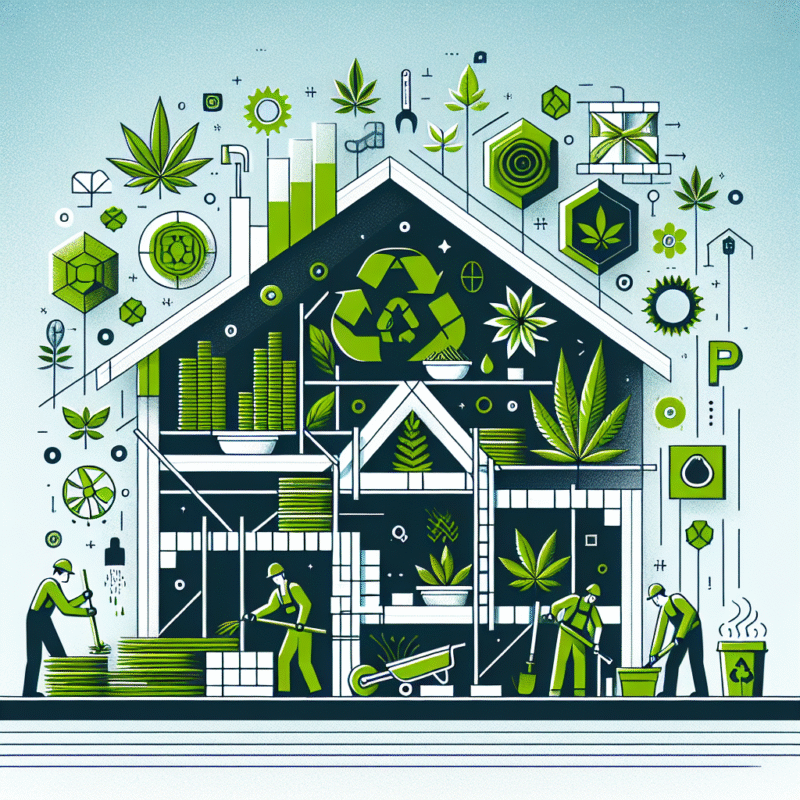Hemp in Construction: A Green Alternative to Traditional Building Materials
Hemp in Construction: A Green Alternative to Traditional Building Materials
As global awareness of environmental sustainability grows, the construction industry is adapting to incorporate greener practices and materials. One such innovation gaining traction is hemp, a versatile plant that is revolutionizing how we think about building materials. From its eco-friendly properties to its potential economic benefits, hemp is proving to be an attractive alternative to traditional materials.
The Benefits of Hemp in Construction
-
Sustainability: Hemp is one of the fastest-growing plants, capable of reaching maturity in just 3-4 months. Its quick growth means it can be harvested multiple times a year, promoting sustainable agricultural practices. Unlike traditional timber, hemp can be cultivated without harmful pesticides or herbicides, leading to a more environmentally responsible farming method.
-
Carbon Sequestration: One of the most significant environmental advantages of hemp is its ability to sequester carbon dioxide during its growth cycle. This natural process not only reduces greenhouse gases but also helps mitigate climate change.
-
Biodegradability: Hemp-based materials are biodegradable, reducing waste in landfills. Traditional construction materials like plastics and concrete often take hundreds of years to decompose, while hemp materials can break down naturally, lessening their environmental footprint.
-
Thermal and Acoustic Insulation: Hemp has excellent insulation properties. Hempcrete, a bio-composite made from hemp hurds (the woody internal parts of the plant) and lime, provides exceptional thermal insulation, helping buildings maintain temperature more efficiently. Its sound-absorbing qualities also contribute to quieter living spaces.
- Strength and Durability: Despite being lightweight, hemp-based materials can be incredibly strong. Hemp composites have been used in non-structural applications like wall panels and roofs but have also shown promise in structural capacities. Additionally, hemp’s resistance to mold and pests further enhances its durability.
Hempcrete: A Revolutionary Building Material
Hempcrete, a mixture of hemp fibers, lime, and water, is one of the most prominent applications of hemp in construction. Unlike concrete, hempcrete does not have load-bearing capabilities. Instead, it is typically used in combination with a structural frame, providing insulation and weatherproofing properties.
Building with hempcrete offers several advantages:
- Energy Efficiency: Hempcrete walls can significantly reduce heating and cooling energy costs due to their excellent insulation properties.
- Moisture Regulation: Hempcrete can absorb and release moisture, leading to healthier indoor air quality by preventing mold growth.
- Natural Aesthetics: Hempcrete lends a unique, natural aesthetic to buildings, appealing to eco-conscious consumers.
Challenges and Considerations
Despite its numerous benefits, integrating hemp into construction presents challenges. Regulatory hurdles can hinder its widespread adoption. In many regions, building codes do not yet recognize hemp-based materials, limiting their use. Additionally, there is a need for further research to fully understand the long-term performance of hemp in various building applications.
The initial costs of hemp materials can also be higher than traditional options. However, the long-term savings through energy efficiency and lower maintenance costs can outweigh the initial investment.
The Future of Hemp in Construction
As the demand for sustainable building practices continues to rise, so too does interest in hemp as a construction material. Various organizations and startups are investing in research and development to promote hemp’s usage in architecture and building. Additionally, as more consumers prioritize sustainability, the market for hemp in construction is expected to grow.
Some forward-thinking countries have already begun to implement hemp into their building codes, paving the way for wider acceptance and encouraging innovation in hemp cultivation and processing.
Conclusion
With its sustainability, durability, and energy efficiency, hemp is positioning itself as a strong contender in the quest for greener construction materials. By overcoming regulatory challenges and increasing public awareness, hemp can play a crucial role in shaping a more sustainable future for the construction industry. As we move towards an era of eco-friendly building practices, the potential of hemp remains vast, promising a healthier planet and enriched lives for generations to come.

